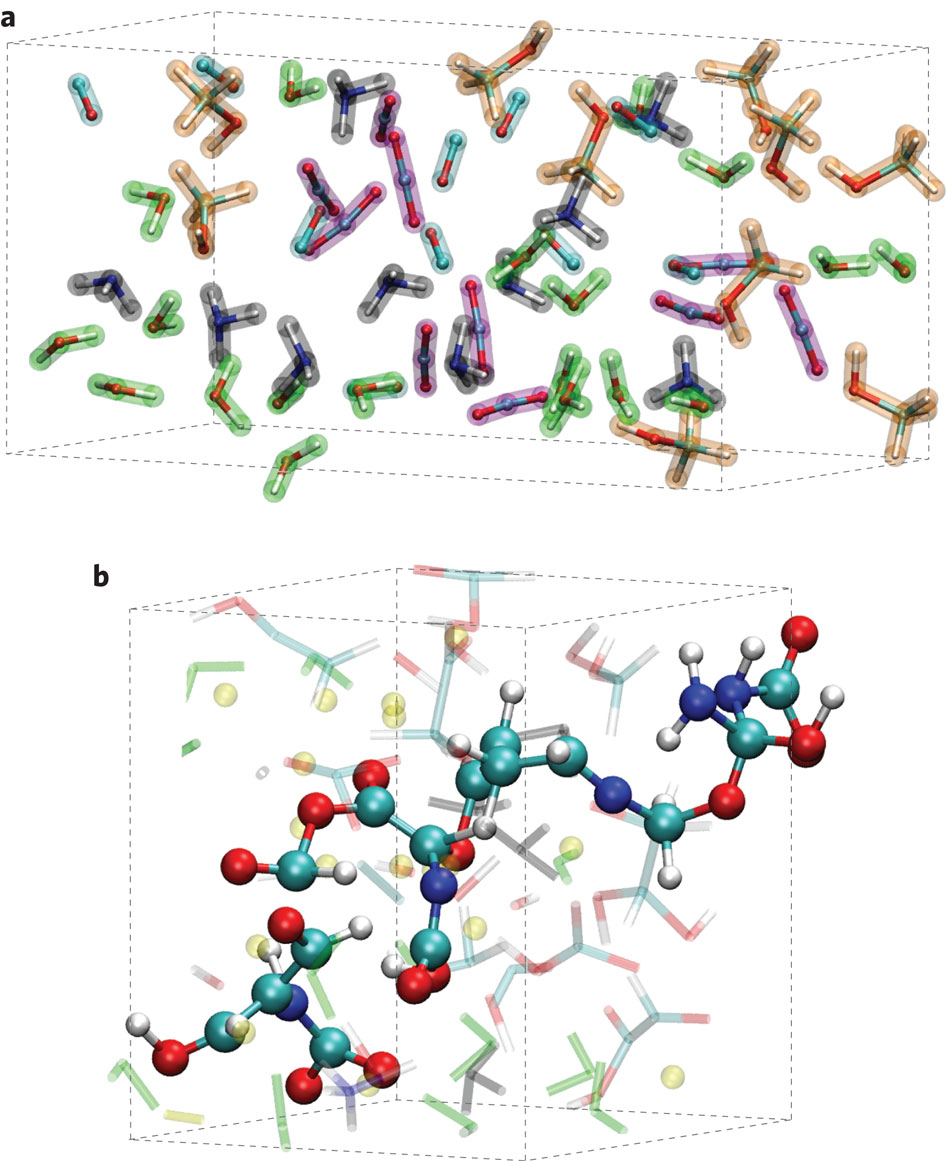過去對於「生命來自於彗星撞地球」的想法,總是存在相當多的爭議。這次科學家利用實驗,模擬出彗星中的物質在劇烈撞擊之下,可能導致氨基酸形成的過程。
上圖a,彗星中原有的分子,在撞擊發生前的狀態。
上圖b,在撞擊發生時,形成了CH3OH的分子。
a,b At the initial conditions (a) and during shock compression at 9 km s−1 (47 GPa) (b). For all of our simulation snapshots, H2O molecules are coloured green, NH3 black, CO light blue, CO2 purple and CH3OH orange. For the atoms, oxygen is red, hydrogen is white, carbon is light blue and nitrogen is dark blue. In (b) the smaller size of the simulation cell results from the shock compression. For clarity we show only atomic sites for C–N bonded species (opaque) formed during shock compression. All other species (transparent) are shown by their bonds only, excluding H+ ions, which are shown as yellow spheres. After shock compression, all of the CH3OH and CO2 are consumed. A small number of H2O and NH3 molecules are still observed, as well as a single CO molecule. Shock compression caused several exotic species to form, including the large carbon chain-like oligomer with several C–N bonds shown in the middle of the snapshot.
資料來源:
Goldman, N., E. J. Reed, L. E. Fried, I.-F. William Kuo& A. Maiti, 2010, Synthesis of glycine-containing complexes in impacts of comets on early Earth, Nature Chemistry, doi:10.1038/nchem.827.
http://www.nature.com/nchem/journal/vaop/ncurrent/full/nchem.827.html
